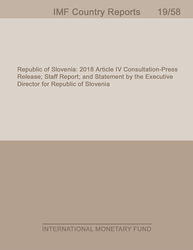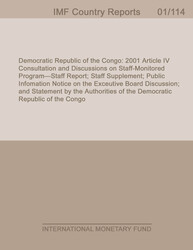
Bosnia and Herzegovina: Financial System Stability Assessment-Press Release; Staff Report; and Statement by the Executive Director for Bosnia and Herzegovina
EXECUTIVE SUMMARYEconomic and financial activity in Bosnia and Herzegovina (BiH) remains stuck in a low gearsince the global financial crisis, reflecting weak external demand, tighter funding conditions,and deep seated structural issues. A high system-wide NPL ratio—14 percent at end-2014, abouttwo thirds of which are provisioned—reflects the impact of the crisis, low growth since then, and ahistory of lax lending policies. Bank governance problems, related-party loans and inadequatecorporate resolution and insolvency frameworks are obstacles to addressing asset quality problemsand re-establishing bank profitability. Institutional fragmentation is delaying much-needed financialsector reforms.Aggregate solvency and liquidity indicators appear broadly sound, but significant pockets ofvulnerability exist. The banking system is more than 80 percent foreign-owned banks. The averageregulatory capital adequacy ratio exceeded 16 percent as of end 2014. However, the dispersionamong banks is wide, ranging from about 7 percent to 48 percent. Vulnerabilities are concentratedwithin domestically-owned banks, some of which are struggling to meet capital requirements, whilesome others are relying on public support. Stress tests indicate that these banks have largeconcentration risks and low liquidity ratios. While the insurance sector is small, a number ofcompanies have thin solvency margins. FSAP team access to supervisory data—at the individualbank level, aggregated along group of banks, and system wide level—was exceptionally good.Decisive and timely actions to deal with weak banks are critical for preserving financialstability. A comprehensive strategy—backed by a credible diagnostic assessment—is needed soonto either facilitate the recovery of these banks (if practicable) or to resolve them in a cost-effectivemanner that is also consistent with maintaining the stability of the financial system and protectinginsured depositors. The timetable for these steps should be spelled out clearly and effectivelycommunicated, and consideration should also be given to a credible and transparent publicbackstop to deal with potentially systemic cases.Banking and insurance oversight improved since the 2006 FSAP, but a number of importantshortcomings remain that have contributed to the vulnerabilities of the financial sector.Cooperation among the various oversight institutions is complex, having potential repercussions intimes of stress. Lack of adequate governance and risk management has contributed to the currentnumber of problem banks. The administrative powers of the agencies to sanction and finesupervisory board members and significant owners are inadequate. Moreover, the identification ofultimate beneficial owners of banks is problematic and related-party lending and group exposuresare obscure. There is a need to further strengthen the supervisory board selection process andinternal audit functions of state banks. The prudential framework for the insurance sector should beupdated to improve its risk sensitivity. Consumer protection and financial literacy in the insuranceindustry are weak and should be improved.The legal framework governing creditor/debtor relationships is comprehensive; however,neither debt resolution nor bankruptcy liquidation work effectively, impeding NPL resolution.
Publication date: July 2015
ISBN: 9781513546636
$18.00
Add to Cart by clicking price of the language and format you'd like to purchase
Available Languages and Formats
| English |
Prices in red indicate formats that are not yet available but are forthcoming.
Topics covered in this book
This title contains information about the following subjects.
Click on a subject if you would like to see other titles with the same subjects.
Money and Monetary Policy , International - Economics , Public Policy ,
Also of interest
Summary
Copyright © 2010 - 2025
Powered by:
AIDC



